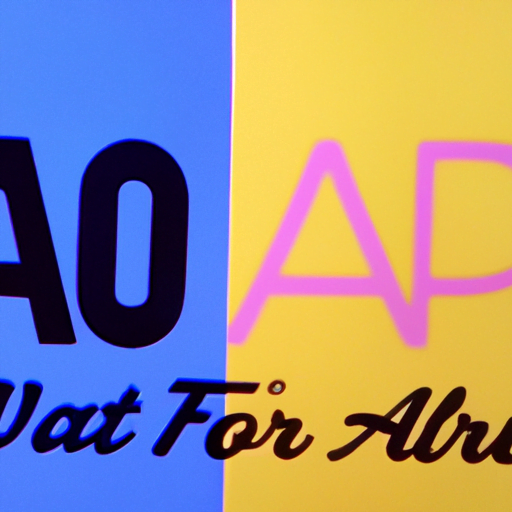
-
Table of Contents
- The Art of Hand-Lettering and Calligraphy
- The History of Hand-Lettering and Calligraphy
- Techniques and Tools
- 1. Brush Lettering
- 2. Dip Pen Calligraphy
- 3. Modern Calligraphy
- 4. Typography
- 5. Tools
- Applications of Hand-Lettering and Calligraphy
- 1. Graphic Design
- 2. Wedding and Event Invitations
- 3. Signage and Murals
- 4. Personal Projects and Gifts
- The Benefits of Learning and Practicing Hand-Lettering and Calligraphy
- 1. Improved Focus and Concentration
- 2. Enhanced Creativity
- 3. Stress Relief
- 4. Improved Hand-Eye Coordination
- 5. Personalized Gifts and Projects
- Summary
The Art of Hand-Lettering and Calligraphy

Hand-lettering and calligraphy are two beautiful art forms that have been practiced for centuries. They involve the creation of visually appealing and unique letterforms, often used in various forms of design, such as logos, invitations, and signage. In this article, we will explore the history, techniques, and modern applications of hand-lettering and calligraphy, as well as the benefits of learning and practicing these art forms.
The History of Hand-Lettering and Calligraphy
Hand-lettering and calligraphy have a rich history that dates back to ancient civilizations. The earliest known examples of calligraphy can be traced back to ancient Egypt, where hieroglyphics were used to communicate and record important information. The art of calligraphy then spread to other ancient civilizations, such as the Greeks and Romans, who used it for inscriptions on monuments and manuscripts.
During the Middle Ages, calligraphy became an essential part of religious texts and illuminated manuscripts. Monks and scribes meticulously hand-copied and embellished these manuscripts, creating intricate and ornate letterforms. The Renaissance period saw a revival of interest in calligraphy, with artists like Leonardo da Vinci and Albrecht Dürer incorporating calligraphic elements into their works.
In the 20th century, hand-lettering and calligraphy experienced a resurgence in popularity, particularly with the rise of graphic design and advertising. Artists like Edward Johnston and Rudolf Koch played a significant role in promoting calligraphy as a form of artistic expression. Today, hand-lettering and calligraphy continue to evolve and adapt to modern design trends.
Techniques and Tools
Hand-lettering and calligraphy require specific techniques and tools to achieve the desired results. Here are some of the key techniques and tools used in these art forms:
1. Brush Lettering
Brush lettering involves using a brush pen or a paintbrush to create letterforms. It allows for a wide range of styles, from bold and expressive to delicate and graceful. Brush lettering is often used in modern calligraphy and is popular for creating dynamic and eye-catching designs.
2. Dip Pen Calligraphy
Dip pen calligraphy is a traditional form of calligraphy that involves dipping a pointed metal nib into ink and using it to create letterforms. This technique allows for precise control over the thickness and thinness of the strokes, resulting in elegant and refined lettering. It requires practice and skill to master the pressure and angle needed to create consistent letterforms.
3. Modern Calligraphy
Modern calligraphy is a contemporary take on traditional calligraphy. It often combines elements of brush lettering and dip pen calligraphy, resulting in a more relaxed and informal style. Modern calligraphy is popular for creating wedding invitations, greeting cards, and other personalized designs.
4. Typography
Typography refers to the art and technique of arranging typefaces to create visually appealing and readable text. It plays a crucial role in hand-lettering and calligraphy, as the choice of typeface and its arrangement can greatly impact the overall design. Typography involves considerations such as letter spacing, line spacing, and font pairing.
5. Tools
Various tools are used in hand-lettering and calligraphy, depending on the technique and personal preference of the artist. Some common tools include:
- Brush pens
- Dip pens
- Ink
- Paper
- Rulers and guides
Applications of Hand-Lettering and Calligraphy
Hand-lettering and calligraphy have a wide range of applications in various fields. Here are some examples:
1. Graphic Design
Hand-lettering and calligraphy are often used in graphic design to create unique and personalized designs. They can be used in logos, branding materials, packaging, and advertising campaigns. Hand-lettered typography adds a personal touch and can help a brand stand out from the competition.
2. Wedding and Event Invitations
Hand-lettering and calligraphy are popular choices for wedding and event invitations. The elegant and sophisticated letterforms add a touch of luxury and create a memorable first impression. Calligraphed envelopes and place cards are also common in weddings and formal events.
3. Signage and Murals
Hand-lettering and calligraphy are often used in signage and murals to create visually appealing and informative displays. Hand-painted signs and murals can be found in shops, restaurants, and public spaces, adding a unique and artistic touch to the environment.
4. Personal Projects and Gifts
Many people enjoy hand-lettering and calligraphy as a hobby or for personal projects. It can be a therapeutic and creative outlet, allowing individuals to express themselves through beautiful letterforms. Hand-lettered quotes, personalized gifts, and art prints are popular choices for personal projects.
The Benefits of Learning and Practicing Hand-Lettering and Calligraphy
Learning and practicing hand-lettering and calligraphy offer numerous benefits beyond the creation of beautiful letterforms. Here are some of the key benefits:
1. Improved Focus and Concentration
Hand-lettering and calligraphy require focus and concentration, as each stroke and letterform requires careful attention. Engaging in these art forms can help improve concentration skills and promote mindfulness.
2. Enhanced Creativity
Hand-lettering and calligraphy provide an outlet for creativity and self-expression. They allow individuals to experiment with different styles, colors, and compositions, fostering creative thinking and problem-solving skills.
3. Stress Relief
Engaging in hand-lettering and calligraphy can be a calming and stress-relieving activity. The repetitive motions and focus required can help reduce anxiety and promote relaxation.
4. Improved Hand-Eye Coordination
Hand-lettering and calligraphy require precise hand movements and coordination. Regular practice can improve fine motor skills and hand-eye coordination, which can be beneficial in other areas of life.
5. Personalized Gifts and Projects
Learning hand-lettering and calligraphy allows individuals to create personalized gifts and projects for themselves and others. Hand-lettered quotes, cards, and art prints make thoughtful and unique gifts that are cherished by recipients.
Summary
Hand-lettering and calligraphy are ancient art forms that continue to captivate and inspire people today. They have a rich history and offer a wide range of techniques and tools for creating beautiful letterforms. Hand-lettering and calligraphy find applications in graphic design, wedding invitations, signage, and
